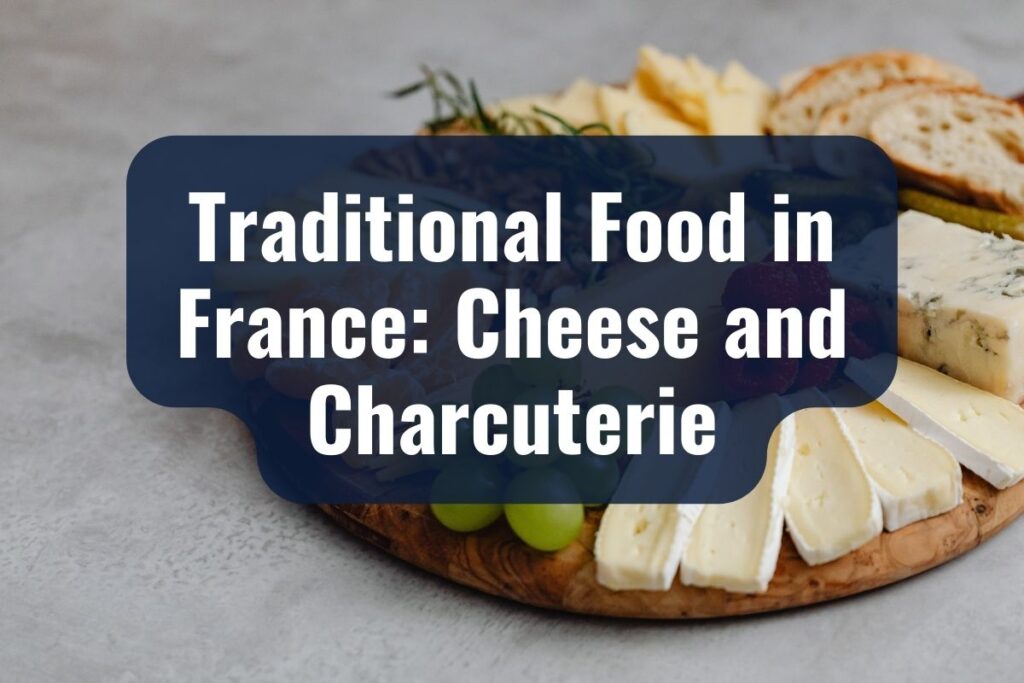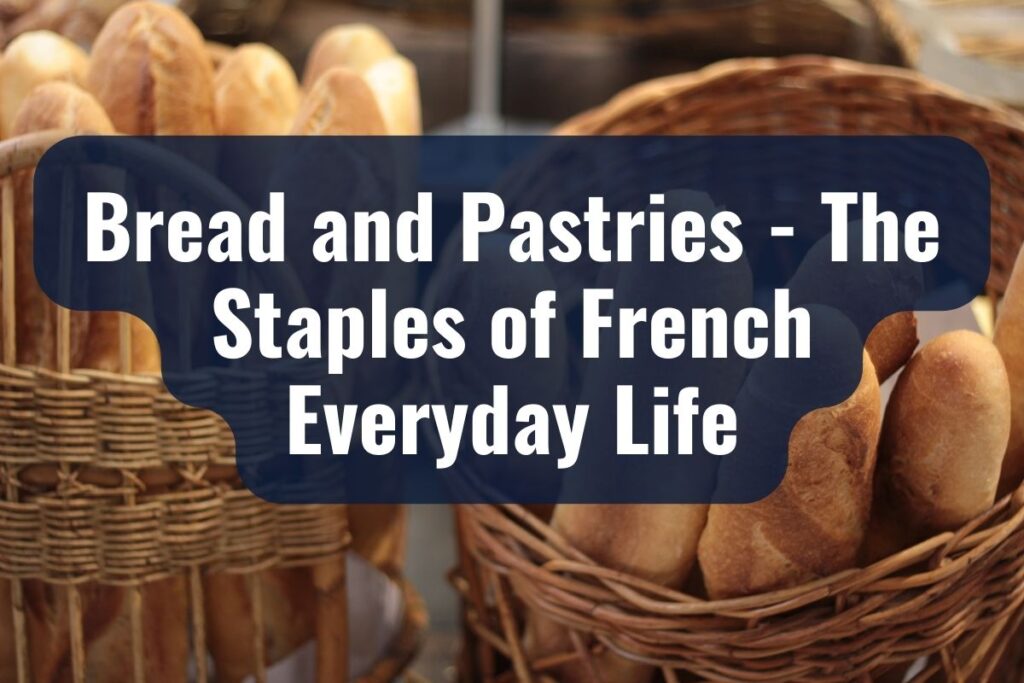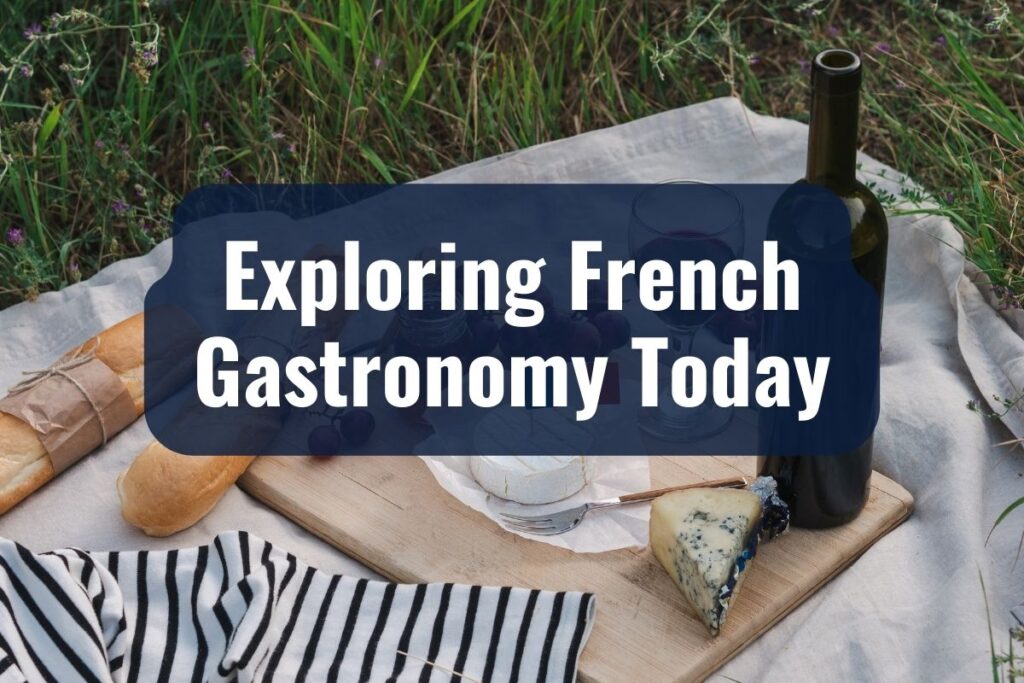In France, food is not merely a means to satiate hunger; it is an art form, a cornerstone of cultural identity, and a subject of national pride. French cuisine, with its intricate techniques and regional flair, is a tapestry woven through history and tradition. It is a cuisine celebrated across the globe for its finesse and flavor, an integral part of what makes France a beloved destination for epicureans everywhere.
The journey through the traditional food in France is a voyage of discovery, a way to experience the regions of France through their most iconic dishes. Each meal is an opportunity to delve into the stories that have shaped French culinary heritage, to understand the soil and the seasons, and to appreciate the meticulous care that goes into every dish.
KEY TAKEAWAYS
- French cuisine celebrates seasonal, quality ingredients and meticulous preparation.
- Iconic French dishes are deeply rooted in regional histories and traditions.
- Cheese and charcuterie are central to French gastronomy, offering complex flavors.
- French desserts blend artistry with classic techniques for an indulgent experience.
- Bread and pastries are daily staples, reflecting France’s rich baking heritage.
- The French culinary approach values savoring meals and embracing food’s social aspect.
- Modern French gastronomy innovates while upholding sustainable, local practices.
- Immersing in bistro culture and Michelin dining provides authentic French experiences.
- Festivals, classes, and markets are key to engaging with France’s culinary landscape.
Iconic Dishes of France and Their Origins
Soupe à l’Oignon – The Heartwarming Onion Soup
This quintessential French dish finds its humble origins in the storied history of Paris. Once considered a meal for the poor, using onions, which were plentiful and cheap, soupe à l’oignon has ascended to a dish cherished by all levels of society. In its classic form, it combines the sweetness of caramelized onions with a rich beef broth, usually served gratinéed with a crust of croutons and melted cheese on top.
The preparation is simple yet requires patience and care to achieve the perfect balance of flavors, showcasing the beauty of using modest ingredients to create a dish of great depth.
Coq au Vin – The Quintessential French Stew
Coq au Vin, which literally translates to “rooster in wine,” is a burgundy-born celebration of rural France’s love for both poultry and the fine wines produced in the region. This dish traditionally made use of an older rooster, slow-cooked to tender perfection in a red wine sauce enriched with mushrooms, bacon, onions, and sometimes even a hint of brandy.
Coq au Vin is a testament to the French philosophy of cooking, which revolves around the respect for ingredients and the alchemy of heat, time, and patience.
Bouillabaisse – The Flavor of the French Seaside
Hailing from the port city of Marseille, bouillabaisse began as a simple fisherman’s stew, made from the catch of the day, typically consisting of rockfish and shellfish, flavored with the region’s native herbs and spices. It has since become an elaborate showcase of the sea’s bounty.
Each rendition of bouillabaisse is unique, with recipes varying by restaurant and household, though the essence of the dish—saffron-infused broth, fennel, and pastis—remains a constant thread, weaving together the taste of the Mediterranean with Provençal tradition.
Ratatouille – A Provençal Vegetable Medley
Ratatouille, the Provençal stewed vegetable dish, is a vivid reflection of the sun-drenched fields of southern France. The dish is a harmonious blend of eggplant, zucchini, bell peppers, onions, and tomatoes, each cooked to maintain its integrity before being layered together. Infused with garlic, herbs de Provence, and olive oil, ratatouille is a celebration of harvest and a testament to the region’s emphasis on the splendor of vegetables. Its origins are rooted in the practice of using up what the garden generously provides, turning an assortment of produce into a dish that is both hearty and aromatic.
Through each of these iconic dishes, one can travel across France’s varied landscape, experiencing the country’s culinary history and its regional heartbeats. These traditional meals tell stories of the land, the seasons, and the people who have crafted them over generations, ensuring that every bite carries with it a piece of French culture and heritage.
Traditional Food in France: Cheese and Charcuterie

| Cheese/Charcuterie | Region of Origin | Characteristics | Common Pairings |
| Camembert | Normandy | Soft, creamy | Apples, baguette |
| Roquefort | South of France | Blue, tangy | Figs, rye bread |
| Brie | Île-de-France | Soft, buttery | Grapes, nuts |
| Saucisson Sec | Nationwide | Dry, cured | Pickles, cheese |
| Jambon de Bayonne | Basque Country | Salted, air-dried | Melon, bread |
| Pâté de Campagne | Nationwide | Coarse, hearty | Mustard, cornichons |
The Prominence of Cheese in French Dining
In France, cheese is an institution, a course unto itself, and often a meal’s crowning glory. With over a thousand varieties, each type of French cheese carries a legacy as rich and complex as its flavors. Take, for instance, the soft and creamy Camembert from Normandy, with its bloomy rind and earthy undertones, or the sharp and crumbly Roquefort, a sheep’s milk cheese that is a symphony of tanginess and power. Then there’s Brie, often dubbed the “Queen of Cheeses,” which seduces with its buttery notes and creamy texture.
When served, cheese is not just an afterthought; it is selected with intention, often to complement the accompanying wine, bread, or charcuterie. It reflects a deep appreciation for the art of cheese-making and the diverse landscapes of the cheese-producing regions.
The Art of French Charcuterie
Similarly, charcuterie is a culinary craft that stands as a testament to the French penchant for turning the simple preservation of meat into an art form. Delicacies such as pâtés, terrines, and saucissons are staples in French cuisine, each with its own history, texture, and flavor profile. A pâté, for instance, might be smooth and spreadable, showcasing the delicate use of herbs and spirits, while a terrine, often encased in pastry, is a more rustic, layered affair.
Saucisson, a dry-cured sausage typically made of pork, is a lesson in patience and tradition. Seasoned with a blend of salt, pepper, and sometimes wine or cheese, it is enjoyed for its firm texture and depth of flavor. The charcuterie platter is a communal experience, a selection meant to be shared, fostering conversation and connection.
Together, cheese and charcuterie embody the essence of French gastronomy: a celebration of regional ingredients, a commitment to time-honored techniques, and the simple joy of sharing good food.
Sweet Indulgences: Classic French Desserts
Crème Brûlée – The Delicate Balance of Cream and Caramel
The crème brûlée is a study in contrasts: the brittle caramelized sugar topping and the velvety custard beneath. This beloved dessert’s roots can be traced back to several European countries, each claiming its creation, but it is the French version that has captured hearts worldwide. Its beauty lies in its simplicity—cream, egg yolks, sugar, and vanilla—ingredients that when brought together properly, result in a dessert that is at once rich and delicate, humble yet sophisticated. The precise technique of torching the sugar to achieve the perfect glass-like crust is a testament to the culinary prowess that classic French desserts demand.
Tarte Tatin – An Upside-Down Pastry Tale
The Tarte Tatin, an upside-down apple tart, owes its name to the Tatin sisters who are said to have invented the dish by happy accident. This dessert, hailing from the Loire Valley, is as much a part of French culinary legend as it is a staple on dessert menus.
The secret to its success is in the caramelization of apples in butter and sugar before being topped with pastry and baked. The result is a sublime combination of buttery, flaky crust and tender, caramel-infused fruit. The Tarte Tatin is not just a dish, but a narrative of rustic French cooking, where simplicity and technique converge to create something extraordinary.
Macarons – The Colorful Confections
Macarons, the petite, colorful confections made of almond meringue, have a history as delicate as their constitution. They first made their way from Italy to France with the marriage of Catherine de’ Medici to King Henry II.
Today, they are a hallmark of French pâtisserie. Achieving the perfect macaron with its smooth top, ruffled “foot,” and tender, chewy interior is a pursuit that patissiers dedicate themselves to with passion. Each bite-sized piece, with its array of flavors and hues, is a celebration of precision and elegance, a testament to the sophistication that underpins French dessert craftsmanship.
Each of these desserts captures the spirit of French indulgence—indulgence that is measured, refined, and steeped in tradition. They are the sweet epilogue to a meal, a final note that encapsulates the care and the flair with which French cuisine is prepared.
Bread and Pastries – The Staples of French Everyday Life

The Baguette – A Symbol of French Culture
The baguette, with its golden crust and soft, airy interior, is more than just a type of bread—it is a cultural icon of France. It’s the result of years of baking tradition, honed since the time of Louis XIV.
The process of creating the perfect baguette, from the precise fermentation of the dough to the exact scoring of its crust, is a craft in its own right, regulated by French law to preserve its quality and tradition. The daily ritual of picking up a fresh baguette from the local boulangerie underscores its integral role in French society, not just as a food item, but as a cherished part of daily life.
Croissants – The Epitome of French Patisserie
The flaky, buttery croissant is a masterpiece of pastry engineering. Though its roots may be traced back to Austria, it is the French who have perfected this crescent-shaped delight. The meticulous process of laminating dough with butter, folding and rolling repeatedly, gives the croissant its distinctive layers.
A properly made croissant is a revelation—crisp on the outside, yielding to a soft, pillowy interior. Consumed typically at breakfast or as a snack, croissants are a testament to the French love affair with patisserie, where attention to detail and patience yield edible art.
Pain au Chocolat – A Sweet Indulgence
Similar in its making to the croissant, the pain au chocolat is a beloved variation that marries the richness of chocolate with the delicate, flaky pastry. Each bite offers the simple yet profound pleasure of melting chocolate encased in layers of buttered dough. It is an indulgence, yes, but in France, it is also a familiar comfort, a staple in the lives of many who grow up with the taste of pain au chocolat as a regular treat, symbolizing the sweet simplicity of French pastries.
Brioche – The Versatile Loaf
Brioche is the quintessential French loaf, rich with butter and eggs, with origins in the Normandy region. It stands as a bridge between bread and pastry, versatile enough to be enjoyed on its own or transformed into anything from a savory sandwich to an elegant dessert. The texture of brioche is soft and tender, a little sweet, and luxuriously rich, making it a favorite for its comforting qualities and its adaptability.
The French Approach to Cooking and Eating
Reverence for Ingredients
The foundation of French cuisine is a profound respect for ingredients. The French approach to cooking begins with the selection of the freshest and finest produce, meats, and cheeses. Seasonality plays a crucial role in this selection process, as it dictates not only the availability but also the quality and flavor of the ingredients.
In France, the local markets are not just places to buy food; they are arenas that display the bounty of the region and the rhythms of the seasons. The reverence for ingredients extends to the careful and considered preparation methods that aim to enhance their natural qualities, rather than overshadow them.
The Art of Savoring
In France, eating is not a task to be rushed, but an experience to be savored. Meals are often leisurely affairs, with time taken to appreciate the subtleties of flavor and the company of others. The French are known for their long lunches and even longer dinners, where the act of eating is an integral part of social life.
Each course is served sequentially, allowing diners to concentrate on the individual tastes and textures presented. This unhurried pace reflects the French belief that good food and good company are among life’s greatest pleasures.
Culinary Techniques and Traditions
French cuisine is renowned for its culinary techniques, many of which have been refined over centuries. These techniques, from the basics of chopping and sautéing to the complexities of emulsifying and pastry folding, are not merely practical skills. They are traditions, passed down through generations of cooks and chefs, each adding their touch while respecting the foundations laid by their predecessors.
Techniques are celebrated, discussed, and continually perfected, embodying the French dedication to the craft of cooking.
Gastronomy as a Cultural Expression
Gastronomy in France goes beyond the preparation of food; it is a cultural expression and a source of national pride. It’s interwoven with history and art, philosophy, and politics. French cuisine has a narrative quality—each dish tells a story about the land it came from, the people who made it, and the time in which it was created. This cultural tapestry offers a rich dining experience that is as intellectually satisfying as it is pleasing to the palate.
A Model of Balance
Lastly, the French approach to cooking and eating is a model of balance. Rich, indulgent dishes may be followed by light, simple fare. The extravagance of a gourmet tasting menu can be countered by the simplicity of a rustic family meal. This balance is also evident in the way meals are structured, typically consisting of a variety of courses in modest portions, often paired with wine that complements the flavors of the food. This sense of balance ensures that French cuisine can be both an everyday pleasure and an extraordinary experience.
The French approach to cooking and eating is an embodiment of their joie de vivre—a joy of living that finds great expression in the kitchen and at the dining table. It is a holistic approach that embraces taste, technique, tradition, and togetherness, making each meal a celebration of life itself.
Exploring French Gastronomy Today

The Evolution of French Cuisine
French cuisine is not static; it evolves, reflects, and adapts to contemporary tastes while holding firm to its foundational principles. Modern French chefs are at the vanguard of culinary innovation, infusing classic dishes with new life and creativity. This evolution is evident in the rise of fusion cuisines, where French techniques meet global flavors, and in the growing trend of bistronomy, which blends the accessibility of bistro fare with the finesse of gastronomy.
Sustainability and Locavorism
Today’s French gastronomy places a strong emphasis on sustainability and the locavore movement. There is a renewed focus on reducing waste, sourcing ethically, and supporting local farmers and producers. This shift is not just about environmental responsibility; it also speaks to a deeper appreciation for the provenance of food. Restaurants proudly showcase the origins of their ingredients, and chefs become storytellers, weaving narratives of terroir and tradition into their menus.
The Internationalization of French Dining
French cuisine, while deeply rooted in its own culture, has also embraced global influences. Paris and other French cities boast an array of international restaurants, and French chefs often draw inspiration from their counterparts around the world. This internationalization has not diluted the essence of French gastronomy; rather, it has enriched it, fostering a dialogue between different culinary traditions and creating a vibrant, dynamic food scene.
The Role of Technology and Innovation
In the modern era, technology plays a role in the French kitchen, from sous-vide machines to molecular gastronomy techniques. These tools and methods are used not for the sake of novelty but to enhance flavor and precision in cooking. Innovation in French cuisine also includes the reimagining of presentation and service, making fine dining more interactive and personal. The use of technology and innovation demonstrates that French cuisine can honor its past while embracing the future.
The Celebration of Regional Cuisines
Despite globalization and the exchange of culinary ideas, there is a strong movement in France to celebrate and preserve regional cuisines. From the hearty cassoulet of the southwest to the delicate seafood dishes of Brittany, regional specialties are enjoying a renaissance. This celebration is a reminder that French cuisine is a mosaic of local traditions, each with its distinctive ingredients, techniques, and dishes.
Embracing the French Culinary Scene
Immersing in the Bistro Culture
To truly embrace the French culinary scene, one must immerse themselves in the bistro culture. Bistros, the small and often intimate eateries dotted throughout France, offer a window into the soul of French dining. They are places where the ambience is as important as the food, with chalkboard menus boasting the day’s specials, reflecting the seasonality and regional produce. The bistro is a microcosm of French society—a place where food, friendship, and lively conversation are savored with equal pleasure.
Discovering the Michelin Stars
For those with a penchant for fine dining, France’s array of Michelin-starred restaurants is a pilgrimage worth taking. The stars are a signifier of exceptional quality, innovation, and mastery of cuisine. Dining at these esteemed establishments is an experience that goes beyond eating; it’s a theatrical display, a symphony of flavors and textures, orchestrated to provide not just a meal, but a lasting memory.
Participating in Food Festivals
France’s culinary calendar is punctuated by food festivals that celebrate everything from specific ingredients to regional cuisines. Participating in these festivals is not only an opportunity to taste a wide array of dishes but also to engage with chefs, artisans, and fellow food enthusiasts. It’s a way to experience the convivial spirit that infuses the French approach to food and to understand the regional diversities that make up the rich tapestry of French cuisine.
Learning Through Workshops and Cooking Classes
Engagement with French food can also be hands-on through numerous cooking classes and workshops available across the country. These sessions provide insight into the techniques and traditions of French cooking, offering a chance to learn how to create classic French dishes oneself. They demystify the complexities of French cuisine and equip one with skills to recreate the flavors of France at home.
Exploring the Markets
The heartbeat of the French culinary scene is often found in its markets. Strolling through a bustling French market provides a sensory feast, filled with the aromas of fresh produce, the sounds of vendors, and the sight of beautifully displayed fruits, vegetables, meats, and cheeses. Markets are the places where one can grasp the French commitment to quality and the art of selecting the best ingredients—a fundamental aspect of French cooking.
Related: New to France: An Insightful Guide for Newcomers 2024
Additional Resources
For those looking to delve deeper into the nuances of French cuisine, a wealth of culinary literature and cookbooks awaits. Classics like Julia Child’s “Mastering the Art of French Cooking” provide an excellent starting point, while books by contemporary chefs such as Alain Ducasse and Anne-Sophie Pic offer modern interpretations. The literary journey into French gastronomy can also be complemented by food memoirs and essays, where authors share their personal experiences and the lessons learned in French kitchens.
The digital age has made exploring French cuisine more accessible than ever. Online platforms and food blogs are abundant, featuring recipes, video tutorials, and articles that explore the depths of French cooking from the comfort of one’s home. Websites dedicated to French gastronomy often include regional guides, restaurant reviews, and interviews with chefs, providing a comprehensive look at France’s culinary landscape.
The world of French cuisine has been richly documented on film, offering visual feasts that inspire and educate. Documentaries about famous French chefs, renowned restaurants, and the journey of food from farm to table can be particularly enlightening. Films such as “Kings of Pastry” or “A Year in Burgundy” showcase the passion and dedication behind French gastronomy, capturing the essence of the culinary artistry that France is famed for.
Those with a serious passion for French cooking might consider enrolling in a course at one of France’s prestigious culinary schools. Institutions like Le Cordon Bleu, the Institut Paul Bocuse, and the École Ferrandi offer programs ranging from short workshops to full-time professional courses. These schools provide immersive education and training in the art of French cuisine.
To experience French gastronomy in its natural setting, one can partake in the various food and wine tours offered throughout the country. These tours often include visits to vineyards, artisanal producers, and speciality food shops, with expert guides providing valuable insights into the traditions and techniques of French food and wine production.
Joining social media groups and forums focused on French cuisine is another way to connect with like-minded enthusiasts. These communities are a place to share experiences, ask for advice, and find information about culinary events, new restaurant openings, and the latest trends in French gastronomy.


